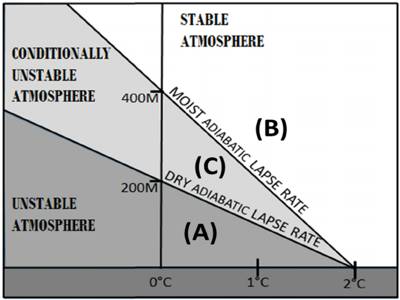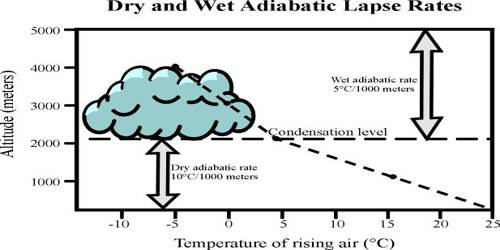Adiabatic Lapse Rate: It is the rate of change of temperature of an air parcel as it moves upwards through the atmosphere rapidly. The rate of change of temperature by an ascending or descending air mass. The lapse rate is the rate at which Earth’s atmospheric temperature decreases with an increase in altitude, or increases with the decrease in altitude. Lapse rate arises from the word lapse, in the sense of a gradual change.
If no other non-adiabatic processes (i.e. no heat enters or leaves the system) happen (like condensation, evaporation, and radiation), expansion causes the parcel of air to cool at a set rate of 0.98° per 100 m. The opposite occurs when a parcel of air descends into the atmosphere. The air in a descending parcel becomes compressed. Compression causes the temperature within the parcel to increase at a rate of 0.98° per 100 m.

This transform is temperature is due to the fact that as you move upwards through the atmosphere, the atmospheric pressure decreases, causing the air parcel to expand. Since this expansion is adiabatic, the work required for expansion is taken from the internal energy of the parcel, causing it to cool down.














